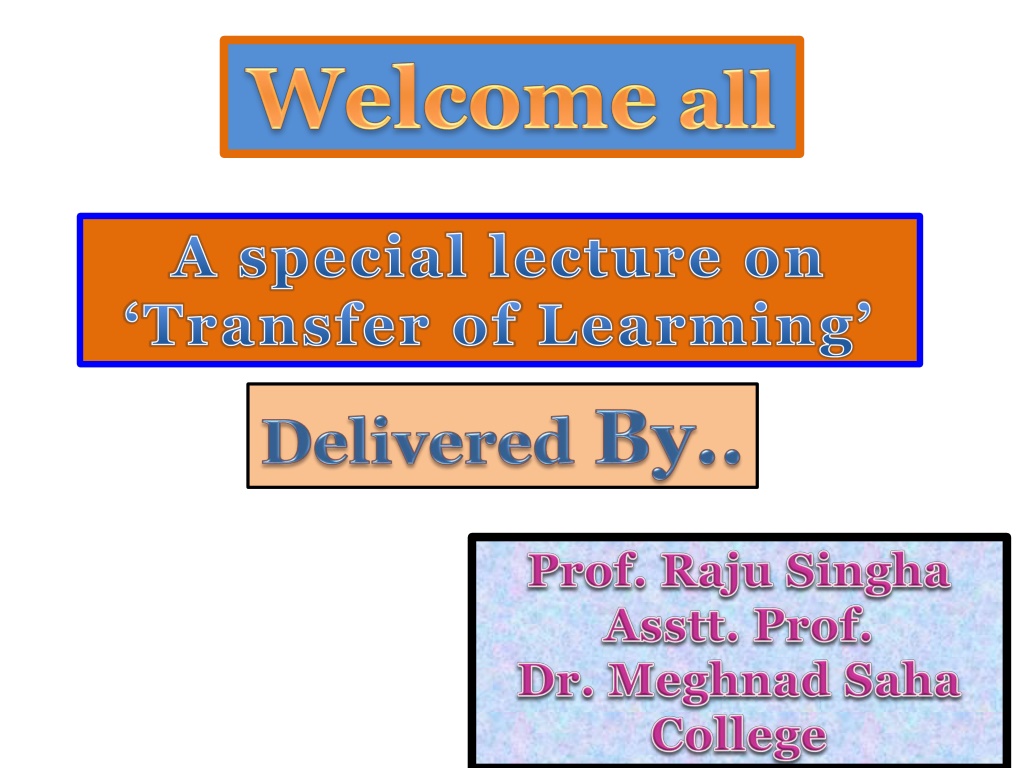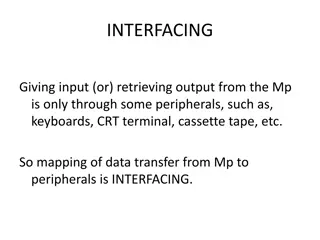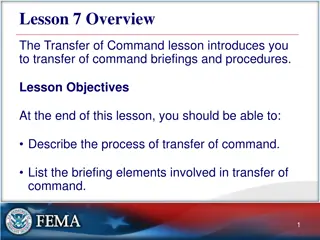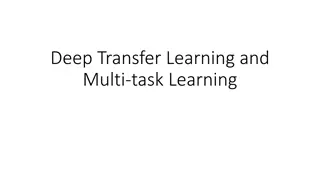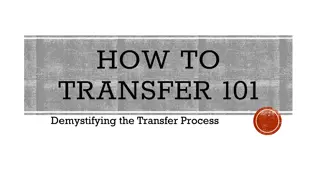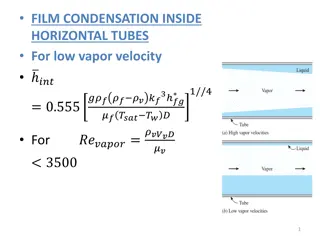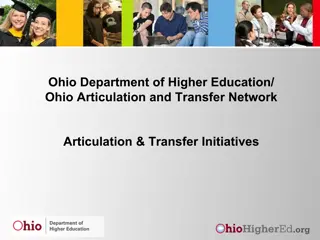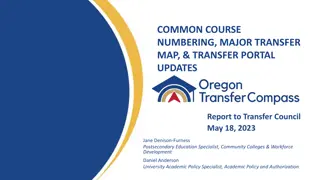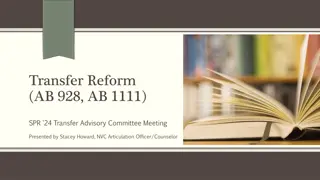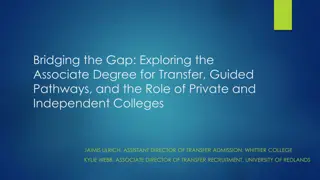Understanding Transfer of Learning: Types and Examples
Transfer of learning refers to the carry-over of habits, knowledge, or skills from one area to another. This process influences performance in various situations, as seen in positive and negative transfer examples. Various definitions and types of transfer learning are explored in this special lecture. Positive transfer enhances learning across domains, while negative transfer may hinder or interfere with new tasks. Understanding these concepts is vital for educators and learners alike.
Download Presentation

Please find below an Image/Link to download the presentation.
The content on the website is provided AS IS for your information and personal use only. It may not be sold, licensed, or shared on other websites without obtaining consent from the author. Download presentation by click this link. If you encounter any issues during the download, it is possible that the publisher has removed the file from their server.
E N D
Presentation Transcript
A special lecture on Transfer of Learming
What is Transfer of Learning? Many of the things we do or perform in day-to-day influenced by experience of learning.The learning of addition and subtraction helps a child in learning multiplication and division. Learning of Mathematics helps in solving numerical problems in Physics. life our are often previous
The carry over of habits of thinking, feeling or working of knowledge or skills from one learning area to another usually referred to as the transfer of learning.Transfer Learning stands mechanism or process in which a person s learning in one situation is carried over or transferred to other situations. of for a special
For having an adequate understanding of the term transfer of learning.We may consider the following definations: 1. B.L.Bigge(1964): Transfer of learning occurs when a person s learning in one situation influences his learning and performance in other situations. 2. H.C.Ellis(1965): Transfer of learning means that experience or performance on one task influences performance on some subsequent task. 3. K.Lovell (1970): Transfer of learning is the effect which some particular course of training has on learning or execution of a second performance.Such an effect may be of a helpful nature or it may hinder.
Types or Forms of Transfer of Learning Depending on the learning situations faced by the learners,the following transfer may occur:
Examples: Positive Transfer of Learning 1. Learning Hindi may help a student learn Punjabi or Gujrati. Transfer Learning is said to be positive when the learning or training out in situation proves helpful learner another situation. of 2. Learning to drive Maruti 800 may help an individual to drive Hyundai or BMW car. carried one to the in 3. Learning to play badminton may help an individual to play Table Tennis and Lawn Tennis.
Negative Transfer of Learning Examples 1. One s regional language or mother tongue problem in one s learning the correct pronunciation intonation related to one s national or foreign language. Transfer Learning is said to be when learning or training in one situation hinders,interferes or weakens the learning another situation. of may create and negative 2. Having learned to drive on the right-hand side the tourists from Japan or USA may find it difficult to drive in India or UK where vehicles are to be driven on the left-hand side. in
Examples ZeroTransfer of Learning 1. Learning History may neither help nor hinder the larning of Economics. Transfer is said to be Zero when learning training in one situation not have significant influence the learning or training another situation. or 2. Learning to play football may noy help or hinder learning to play Volleyball. does any 3. Learning to play Guitar or Sitar neither helps nor hindrs one s performance in her cooking or laundry class. over in
Examples Lateral Transfer It is the most common form of transfer to occur. Suppose a child has been addition and subtraction and he understands that 15-8=7 in the context of beads or blocks or other subjects used classroom teacher, it is hoped this understanding transfer situations. The child at home taught the removes 8 apples from a basket containing apples and understands that there would be 7 left. This is an example of lateral transfer. In this case the child has made use understanding and skill learnt in the school in learning outside the school. 15 in the by the of the would other to situations
Examples Bilateral transfer The human body is divided two laterals; right and left. When training imparted to one automatically transfers another lateral,we call it bilateral transfer. into It is our common experience that we train our right hand in writing. The training of right hand automatically transfers to left hand. We can also write with our left hand. lateral to
Sequential Transfer Examples The contents of the subjects school curriculum divided sequent One idea leads to another and both ideas have some relationship the third idea to be taught. of are into units. The positive facilitation of present learning through past learning is sequential transfer. The learning about Addition helps to make Multiplication. to
Vertical Transfer of Learning Examples Vertical transfer of implies facilitating higher behavioural level in manner lower level learning. learning the The knowledge about addition, multiplication,subtraction and divide helps to solve algebra. vertical by the of
Horizontal Transfer of Learning Examples Lateral sequential transfer are horizontal transfer of learning. When the learning take place from situation to another into same difficulty level or category, is called horizontal transfer of learning. and called When a learning from one situation transfer to another situation with same difficulty and category. one same
Theories of Transfer of Learning
A. Theory of mental Discipline
B. Theory of Identical Elements
Educational Implications of Transfer of Learning
Role of Teacher in Transfer of Learning
The End Thank You
